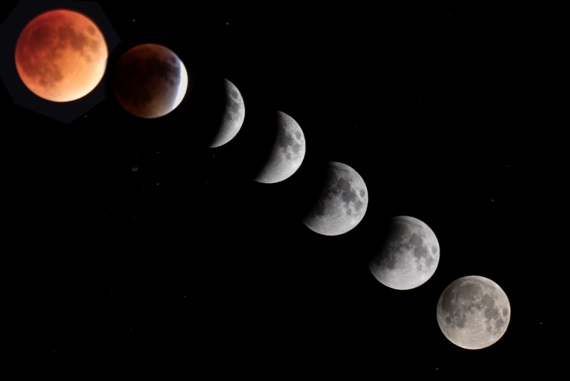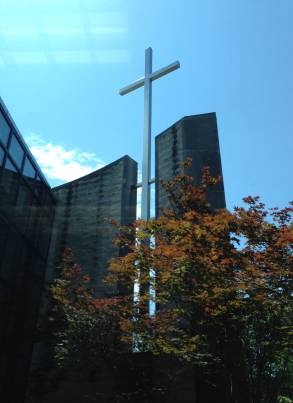September 27, 2015. The supermoon and a total eclipse of the moon, all in one night. What could be more fun or fascinating?
The Rockhurst Photography Club and the Rockhurst Astronomy Club joined forces to witness this special event, one that won’t be seen again until 2033. Not only was it considered the harvest moon, the time when the moon is closest to the autumnal equinox, but a perigee - the point in the orbit of the moon that it is nearest the earth - as well.

We met on the RHS baseball field at dusk: Mr. Paul Winkeler and his earth science students, Mr. Tim Nendick and some of his chemistry students and Ms. Ann Lehane and some of her photography students. The skies had been full of billowing clouds all day, but luckily, for the event, the skies became crystal clear as the evening air cooled. Everyone was armed with their lawn chairs, blankets, telescopes, cameras and tripods.
The large Schmidt telescope was in place, thanks to Mr. Tim Nendick. This was a donation to RHS and Mr. Nendick has been working to make the telescope easier for students to use . This 10” reflector telescope has a 2500mm/f10 lens through which we could view the night sky. Mr. Nendick showed us how to use adaptor rings to mount his Canon camera to the telescope and he took some photographs of the moon through the lens of the telescope.
Students, telescopes and cameras with giant lenses lined the baseball field as we watched the moon rise and crest, capturing the lunar metamorphosis on all of our devices.
The event took approximately three hours. At the full eclipse, the moon was “blood red” and the air became eerily still. We watched as the moon began its full recovery, ending in a brilliant white orb at around 11:30 pm.
This event was a great opportunity for the arts and sciences to share a moment on a baseball field and look to the stars for answers.




Comments